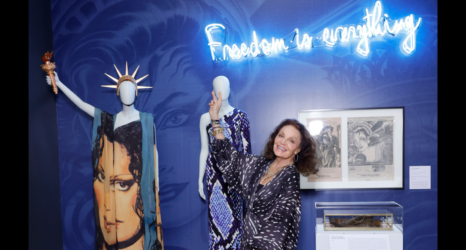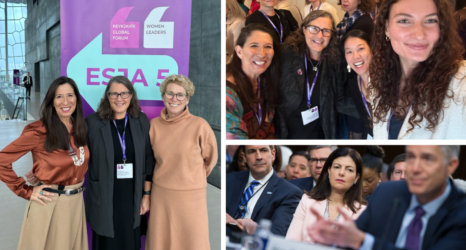Oumo, from sub-Saharan Africa, was forced to trade sex twice for a fake passport and passage to Turkey on her way to Greece. Noor, a pregnant mother of two, was freezing and in severe pain as she waited for a train near the Serbian-Croatian border, unknowingly sitting just meters away from medical services. The journey for Farah and her daughters, who fled Afghanistan and then Iran, was both difficult and dangerous—their biggest fear? Men.
Outrage sparked by recent attacks in Cologne, Germany rightfully led to conversations about upholding women’s rights in Europe, but steered the conversation away from investigating widespread, consistent abuses of migrant women’s rights across the continent. Sexual and gender-based violence, exploitation and a lack of medical resources make the migration route just as dangerous for women and girls, if not more so, than the situations they are attempting to leave behind. European countries consistently top the World Economic Forum’s rankings on gender equality and lead the world in ensuring women’s rights, yet refugee women consistently and unnecessarily suffer within their borders.
Oumo, Noor and Farah are just a few among thousands of women who have fled their countries and traversed Europe toward hope for a safe resettlement. Their stories serve as case studies in a joint assessment conducted by the Women’s Refugee Commission (WRC), United Nations Population Fund (UNFPA) and United Nations High Commission on Refugees (UNHCR), released on Jan. 20, and a second WRC report released on Jan. 26. The joint assessment highlights conditions for female migrants in Greece and Macedonia, and WRC’s second report reveals findings from research in Serbia and Slovenia. The release of these reports follows that of Amnesty International’s Jan. 18 report on the assault, exploitation and harassment of women on the migrant trail.
These reports shed light on harsh realities that have existed since the beginning of the refugee crisis. Beyond investigating the inadequate services for migrant women, the reports offer exigent recommendations to local governments and international aid organizations to take more concerted action. Their research makes clear that the suffering of refugee women and girls is preventable within the realm of current organizational and governmental power. According to Dr. Sarah Costa, executive director of WRC, “The response in Europe so far is failing women and girls on the migration route in every way.”
Failure to ensure the safety of refugee women is not new. “This happens in every humanitarian crisis,” says Deni Robey, director of strategic communications at WRC, “and yet over and over and over the necessary guidelines, systems and procedures to protect women don’t get set up in the beginning. It’s hard to go back and set them up later.”
Much of the abuse experienced by women and girls, according to Amnesty International, occurs at the hands of police and other refugees in sleeping and bathroom facilities that are not separated by gender. Marcy Hersch, a senior advocacy officer at WRC who researched and wrote for both WRC reports, said she saw “no separate bathrooms or sleeping spaces, no lighting, no rape kits. To see this in Europe, I just find it very disappointing.”
Female interpreters and specialists are essential so that women and girls can safely and confidentially discuss their needs, yet they are missing across the board, according to Hersh. When refugees enter European transit centers they “first encounter police and military officials who play the role of helping everyone get preliminary information. I have never seen a single female police officer. Front line workers are uniformly men,” said Hersh.
When female translators and personnel are not visible at entry, exit or transit centers, women and girls are less likely to seek out relevant services or ask questions about sensitive information, whether it be related to reproductive health, sanitary napkins, or sexual and gender-based violence. “Even if a woman wanted to come forward, she can’t. This is unacceptable,” said Robey.
One of the most glaringly absent structures is systemized, cross-border information sharing about high-risk refugees. The silence between transit points renders any isolated services or progress made with individual refugees en route essentially meaningless. To compensate for local governments’ shortcomings, humanitarian aid workers resort to sharing information in WhatsApp groups. Poor handling of information is most harmful to survivors of sexual violence, who are forced to “disclose sensitive details of their case multiple times, which can be re-traumatizing,” according to the WRC report.
WRC found that local women’s groups were the most effective at sharing information, particularly in the Balkans. These organizations set up ad hoc networks and target areas where refugees are backed up outside of official transit points. They deliver the kind of services and havens for women that governments and international organizations have failed to adequately provide.
“Women’s rights organizations are strong across Europe,” says Costa, “and yet we have systematically found that they’re an untapped source of support.”
One such organization, Atina, gets around government roadblocks by deploying teams to work around the perimeters of transit centers where refugees are waiting. The teams they send to assist refugees take a global approach to serving women. By creating safe areas for mothers to drop off their children, they give women time and space to rest. In secure, women-only spaces, they provide a range of medical services, and offer support to survivors of sexual and gender-based violence. Their cross-border network helps women moving quickly along the migration route.
Yet women’s activists trying to reach and help migrant women report having to navigate obstacles, including circuitous routes to camps.“They’re often told it’s for their own protection,” says Hersch, although she finds the excuse dubious. In fact, the WRC report finds that not only are local governments and aid organizations in Europe neglecting women’s needs on the migrant trail, but they actively refuse women’s rights organizations access to transit centers.
Says Hersch, “I feel outraged at what I saw.”
Reporting was supported by the Fuller Project for International Reporting.
Photo of refugee women courtesy of DFID on Flickr. Licensed under Creative Commons 2.0.





